Q
Why is Volvo XC90 insurance so high?
There could be the following reasons for the relatively high insurance costs of the Volvo XC90. Firstly, its price is high, ranging from RM 350,810 to RM 434,888. A high - value vehicle means that the insurance company has to pay a larger amount in case of an accident, so the insurance cost will increase accordingly. Secondly, the maintenance cost of this model might not be low. Factors such as the price of spare parts and labor costs for repairs will all affect the maintenance cost, which will also be reflected in the insurance cost. Moreover, the insurance cost is also influenced by the vehicle's safety features. Although abundant safety features can reduce the risk of accidents, the high cost of repairing or replacing some high - end safety features may also lead to an increase in insurance costs. In addition, the engine displacement of the vehicle can also affect the insurance cost. The Volvo XC90 has a 2.0 - liter engine, which may also have an impact on the insurance cost to some extent.
Special Disclaimer: This content is published by users and does not represent the views or position of PCauto.
Related Q&A
Q
How to check the oil level on a 2018 Volvo XC90?
To check the engine oil level of the 2018 Volvo XC90, first make sure the vehicle is parked on a level surface and turn off the engine for at least 10 minutes to allow the oil to drain back into the oil pan. Then open the hood and find the oil dipstick, usually a yellow or orange pull - ring. Pull it out, wipe it clean with a clean cloth, re - insert it, and then pull it out again. Check if the oil mark is between the "MIN" and "MAX" markings on the dipstick. If it's below the "MIN" mark, you need to add 0W - 20 engine oil that meets Volvo's certification.
Given the hot and humid climate in Malaysia, it's recommended to regularly check the condition of the engine oil, as high temperatures can accelerate oil oxidation. Also, be aware of the electronic oil gauge system equipped in the Volvo XC90. You can view the digital oil level display through the vehicle information menu on the central control screen, which is more accurate than the traditional oil dipstick.
During daily maintenance, besides paying attention to the oil level, also note the color of the oil. If you find it has turned black or contains metal debris, replace it immediately. It's advisable to follow the manufacturer's maintenance cycle of every 10,000 kilometers or 12 months. Using the synthetic oil recommended by the factory can better protect the turbocharged engine and maintain good lubrication performance even in Malaysia's mountainous terrain.
Q
How to check tire pressure on 2018 Volvo XC90?
To check the tire pressure of the 2018 Volvo XC90, first make sure the tires are cold (the vehicle has been parked for at least 3 hours or driven for no more than 2 kilometers). Then, use a digital tire pressure gauge or the tire pressure detection equipment at a gas station/repair shop. Unscrew the tire valve cap, align the tire pressure gauge with the valve stem and press it firmly, and read the displayed tire pressure value. Compare it with the vehicle's recommended value (usually indicated on the driver's side door frame label, inside the fuel tank cap, or in the user manual. The standard tire pressure for the XC90 is approximately 230 - 250 kPa). If the tire pressure is insufficient, use an air pump to inflate the tires to the recommended value. If it's too high, press the center of the valve stem to release air. In the hot climate of Malaysia, the tire pressure may rise slightly due to high temperatures, but there's no need to deliberately release air because the vehicle's recommended value already takes temperature changes into account. Checking the tire pressure once a month regularly can ensure driving safety and fuel efficiency. At the same time, it's recommended to check the spare tire pressure (if equipped), and note that abnormal tire pressure may cause uneven tire wear or a decline in handling performance. If the tire pressure warning light appears on the dashboard, it needs to be dealt with immediately.
Q
What is the fuel economy of a 2018 Volvo XC90?
The 2018 Volvo XC90 comes in versions such as the T5 and the T8 Twin Engine Inscription. The official combined fuel consumption of the T5 version is 7.9L per 100km, while that of the T8 Twin Engine Inscription version is 2.1L per 100km. However, the actual fuel economy can be affected by multiple factors.
In terms of driving habits, aggressive driving styles like rapid acceleration and sudden braking can increase fuel consumption. On the contrary, good habits such as smooth starts and constant - speed driving can help reduce fuel consumption. Regarding road conditions, in congested urban areas where vehicles frequently start and stop, fuel consumption will go up. On the other hand, on highways where vehicles can maintain a stable high - speed, fuel consumption is usually lower.
If the vehicle is overloaded, for example, when it is often full of passengers or carrying a large amount of cargo, the engine has to output more power, which also leads to an increase in fuel consumption. In addition, good vehicle maintenance, such as regular servicing and maintaining proper tire pressure, is beneficial for keeping fuel consumption low.
Q
How to check the oil in a 2018 Volvo XC90?
To check the engine oil level of the 2018 Volvo XC90, first make sure the vehicle is parked on a level surface and turn off the engine for at least 10 minutes to let the oil drain back into the oil pan. Then, open the engine compartment and find the orange or yellow dipstick. Pull it out, wipe it clean, re - insert it, and then pull it out again. Check if the oil level is between the "MIN" and "MAX" marks. If it's below the "MIN" mark, you need to add 0W - 20 full - synthetic engine oil that meets the manufacturer's specifications.
It's worth noting that in the tropical climate of Malaysia, it's recommended to regularly check the condition of the engine oil, as high temperatures may accelerate oil oxidation. Meanwhile, the electronic oil gauge of the XC90 can be viewed through the center console screen, but checking with the traditional dipstick is still a reliable method.
For turbocharged engines, maintaining an appropriate oil level is especially important, as the oil not only lubricates but also cools the turbo components. It's recommended to check the oil level every 5,000 kilometers or every 3 months. You should also confirm the oil condition before long - distance driving, which helps to extend the engine's lifespan and maintain optimal performance.
Q
What model XC90 has massage seats?
In the Malaysian market, the Volvo XC90 models that offer massage seats are mainly the high - end versions, such as the T8 Inscription and R - Design models. The front seats of these models are usually equipped with multi - way power adjustment, heating, ventilation, and massage functions, which are especially suitable for relieving fatigue during long - distance driving. The massage seats in the XC90 typically offer a variety of modes and intensity options, and can provide soothing presses on areas like the waist and back, enhancing the seating comfort.
In addition to the massage seats, the high - end XC90 models are also equipped with other luxury features, such as the Bowers & Wilkins sound system, four - zone automatic climate control, and advanced driver assistance systems, which further enhance the overall driving and riding experience. For Malaysian consumers, choosing these high - end models not only allows them to enjoy a more comfortable ride but also enables them to experience Volvo's leading technologies in safety and technology, such as the City Safety urban safety system and the Pilot Assist pilot - assist system. These features are particularly useful in Malaysia's ever - changing traffic environment.
Q
How much oil does a 2018 Volvo XC90 take?
In 2018, the oil capacity of the Volvo XC90 depends on the engine type. For the 2.0-liter four-cylinder turbocharged engines of the T5 or T6 models, they usually require about 5.6 liters of oil. It is recommended to use 0W - 20 or 5W - 30 fully synthetic oil certified by Volvo to ensure optimal performance.
In the hot climate of Malaysia, it's especially important to regularly check the oil condition and replacement cycle, as high temperatures can accelerate oil aging. Generally, changing the oil every 10,000 kilometers or 12 months is a reasonable maintenance interval.
It should be noted that when adding oil, be sure to use original or equivalent - specification products. Avoid mixing oils of different brands, as it may affect the engine's lubrication effect and longevity.
If car owners are unsure about the specific operations, they can go to the Volvo - authorized service center for professional maintenance. The service center will also check the status of other key components such as the oil filter to ensure the vehicle stays in the best running condition.
Q
How much horsepower does a 2018 Volvo XC90 have?
In 2018, the horsepower output of the Volvo XC90 depends on the engine model you choose. The T5 version, which is common in the Malaysian market, is equipped with a 2.0-liter turbocharged four-cylinder engine that can produce approximately 250 horsepower. The T6 version, on the other hand, uses a 2.0-liter turbocharged + supercharged dual-charging system, reaching 316 horsepower. The top-of-the-line T8 plug-in hybrid version has a combined horsepower of up to approximately 407, demonstrating Volvo's strength in high-efficiency powertrain technology. For Malaysian consumers, the horsepower performance of the XC90 is more than enough to meet the diverse local road conditions. Whether it's for city commuting or long-distance travel, it can provide ample power.
It's worth mentioning that Volvo's Drive-E engine series is well-known for its modular design. Through different tuning, it can balance performance and fuel economy. This technical concept also enables the XC90 to remain competitive in the luxury SUV market. The hot climate in Malaysia places high demands on the engine's heat dissipation performance. The XC90's turbocharging system is equipped with advanced intercooler technology, which can effectively maintain the stability of power output.
Q
Does a 2018 Volvo XC90 have a wet belt?
The 2018 Volvo XC90 doesn't feature a wet belt design. Instead, it uses a more traditional timing chain. This kind of chain is usually located inside the engine and lubricated by engine oil. It has a longer service life and higher reliability, and generally doesn't need to be replaced regularly like a belt. Wet belts are commonly seen in small - displacement engines of some European brands. They run while being immersed in engine oil, but there may be an issue of aging after long - term use. The timing chain is more suitable for the durability requirements of large SUVs like the XC90.
For Malaysian car owners, the timing chain has lower maintenance costs and is more suitable for the local hot and humid climate, as chains aren't as susceptible to high temperatures and humidity as belts. However, regardless of which timing system is used, regularly checking the engine oil condition and having timely maintenance are still the keys to ensuring the long - term stable operation of the engine. It is recommended that car owners follow the maintenance cycle recommended by Volvo and use engine oil that meets the specifications to maximize the engine's lifespan.
Q
Does the 2018 Volvo XC90 have a head-up display?
The 2018 Volvo XC90 does come with the Head-Up Display (HUD) feature in some high - end models. This technology can project crucial driving information such as vehicle speed and navigation instructions onto the windshield, allowing drivers to access the information without looking down, which improves driving safety. It's particularly suitable for the congested city traffic in Malaysia and long - distance driving scenarios.
However, the HUD was not standard across all models. It was typically found on higher trims or as part of an optional package. It is recommended that potential buyers carefully check the configuration list or consult local dealers to confirm the specific configuration of the vehicle they're interested in.
Regarding the Head - Up Display technology, it was first used in the aviation field and has now become a common feature in luxury cars. Besides Volvo, brands like BMW and Mercedes - Benz also widely adopt it. Different brands' HUDs have their own characteristics in terms of projection brightness, information richness, and customization functions, but the core purpose is to reduce the driver's line - of - sight deviation. This technology also adapts well to the strong sunlight in Malaysia's hot climate because most HUD systems have an automatic brightness adjustment function.
If you're interested in the XC90, you can also pay attention to other safety technologies introduced around the same time, such as the City Safety system and Pilot Assist semi - autonomous driving assistance. These features together reflect Volvo's brand concept centered around safety.
Q
Does the 2018 Volvo XC90 have air suspension?
Among the configurations of the 2018 Volvo XC90 available in the Malaysian market, some high - end models (such as the Inscription or R - Design versions) can be optionally equipped with an Air Suspension system. However, it is not a standard feature across the whole range. You need to confirm this based on the actual sales configuration list or the owner's manual of that year. The air suspension can change the vehicle's body height by adjusting air pressure, which can enhance comfort (such as filtering out bumps) or practicality (such as lowering the loading height of the trunk), making it suitable for Malaysia's diverse road conditions. If your vehicle is equipped with this function, you can adjust it in the "Driving Mode" or "Chassis Settings" on the central control screen. However, be aware that the long - term maintenance cost is relatively high (for example, the airbags need to be replaced when they age). Similar configurations are also commonly offered in German luxury SUVs of the same class, such as the Mercedes - Benz GLE or the BMW X5. Volvo's tuning is more inclined towards the Nordic comfort style, which is suitable for family users. If you're buying a used XC90, it is recommended to check if the suspension airbags are leaking by lifting the vehicle or to check the original factory maintenance records to confirm the configuration.
Latest Q&A
Q
What is a 2020 VW Passat worth?
In 2020, the second - hand car prices of the Volkswagen Passat in Malaysia were approximately between RM90,000 and RM130,000. The specific value depends on factors such as the vehicle's condition, mileage, configuration version, and maintenance records. For example, the price difference between the entry - level version equipped with a 1.8 TSI engine and the high - end 2.0 TSI version can be up to RM30,000. Usually, for each additional year of the vehicle's age or every 10,000 kilometers exceeded in mileage, the price will decrease by 5% to 8%.
It's worth noting that as a German mid - size sedan, the Passat has a better resale value in the second - hand market than some Japanese competitors. This is due to its solid chassis tuning and the reliability of the EA888 engine. At the same time, it is recommended that buyers give priority to vehicles with complete original - factory maintenance records and pay attention to checking the shifting smoothness of the 7 - speed DSG transmission. Such details will significantly affect the long - term use cost. In Malaysia's hot climate, special attention should also be paid to the aging of rubber parts. Regularly replacing the coolant and transmission oil can effectively extend the vehicle's service life.
Q
Is a 2020 VW Passat a good car?
The 2020 Volkswagen Passat is a model worth considering in the Malaysian market. It has won the favor of many consumers for its comfort, practicality, and reliable performance. This car is equipped with a 1.8-liter or 2.0-liter turbocharged engine, which provides smooth power output and good fuel economy, making it suitable for both city driving and long-distance travel in Malaysia.
The interior design is simple yet elegant. The materials used are of high quality, and the space is quite roomy. In particular, there's plenty of legroom in the back row, which makes it perfect for family use. In terms of technology features, it comes with an 8-inch touchscreen, Apple CarPlay, and Android Auto, enhancing the convenience of daily use.
Safety is also one of the Passat's strong points. It comes standard with a number of active safety technologies, such as automatic emergency braking and blind-spot monitoring. In Malaysia, Volkswagen has a relatively well - established after - sales service network, so maintenance is relatively convenient.
It should be noted that as a German - made car, the prices of its spare parts may be slightly higher than those of Japanese cars. However, its overall quality and durability are excellent. For Malaysian consumers who value comfort and practicality, the 2020 Passat is a great choice. It is recommended to compare it with Japanese or Korean models in the same class before making a purchase and make a decision based on your own budget and needs.
Q
How big is the trunk of the Passat 2020?
The 2020 Volkswagen Passat has a trunk capacity of 586 liters. This space is more than ample for daily use or family outings. It can easily hold multiple suitcases or large items, which suits the Malaysian consumers' preference for long - distance travel and their relatively high demand for shopping. If you need to expand the space, the rear seats can be folded down in proportion, further enhancing the storage flexibility and making it convenient to carry longer items like golf clubs or camping gear.
In Malaysia's hot and rainy climate, the Passat's trunk design also takes practicality into account. The interior is flat and the opening is large, facilitating the loading and unloading of items. Among cars in the same class, the Passat's trunk performance is above average, balancing comfort and practicality. It's a great option for users who value space and versatility.
Moreover, the Passat's trunk is equipped with useful anchor points and storage features, which make it easy to secure items or store small things in an organized way. These little details can bring a lot of convenience in daily use.
Q
What gas does a 2020 Passat take?
The 2020 Volkswagen Passat is recommended to use RON 95 unleaded gasoline in the Malaysian market. This is the most common and cost - effective fuel choice in Malaysia, which can fully meet the daily needs of the 1.8 TSI or 2.0 TSI turbocharged engines of this model, and it also complies with local fuel standards and vehicle design specifications. If you're after better performance, you can also opt for RON 97 unleaded gasoline. Its higher octane rating can optimize the engine's anti - knock performance under high - load conditions. However, it should be noted that Malaysia uses a floating oil price mechanism, and the cost of RON 97 is significantly higher than that of RON 95.
It's worth mentioning that all gasoline in Malaysia is required to have detergents that meet EURO 4M standards or higher, which can effectively keep the fuel system clean. Car owners don't need to buy additional fuel additives. For turbocharged models, it's advisable to regularly check the status of the high - pressure fuel pump and injectors at authorized service stations, as these direct - injection engines are quite sensitive to fuel quality.
In addition, there may be differences in fuel supply between the Malaysian Peninsula and some remote areas in East Malaysia. Before a long - distance self - drive trip, you can check the distribution of gas stations through the MyEG or Petronas apps.
Q
What kind of oil does a 2020 Passat use?
For the 2020 Volkswagen Passat in the Malaysian region, it is recommended to use synthetic engine oil that meets the VW 502 00 or VW 504 00 standards. The viscosity is usually 5W - 30 or 5W - 40. The specific choice needs to be adjusted according to the driving environment and climate conditions. In hot climates, 5W - 40 can be given priority to provide more stable high - temperature protection.
Malaysia has a hot and humid climate. It is recommended that car owners change the engine oil regularly every 10,000 kilometers or 12 months (whichever comes first), and ensure that the vehicle is serviced at an authorized dealership or a certified repair center to maintain the validity of the warranty.
It should be noted that if the vehicle is equipped with a GPF (Gasoline Particulate Filter), low - ash engine oil (such as those meeting the VW 504 00 standard) must be used to avoid clogging. The quality of the engine oil directly affects the engine's lifespan and fuel efficiency. It is recommended to choose well - known brands like Castrol, Shell, or Liqui Moly, and select products that are VW - certified. Also, regularly check the engine oil level, especially before long - distance trips.
If you often encounter congested traffic or engage in high - intensity driving, you can appropriately shorten the oil change interval to 8,000 kilometers to optimize protection.
View MoreRelated News
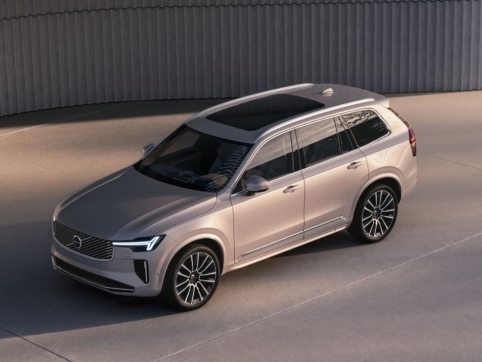
Volvo XC90 Facelift Launched in Malaysia with Exterior and Interior Changes
JohnApr 11, 2025
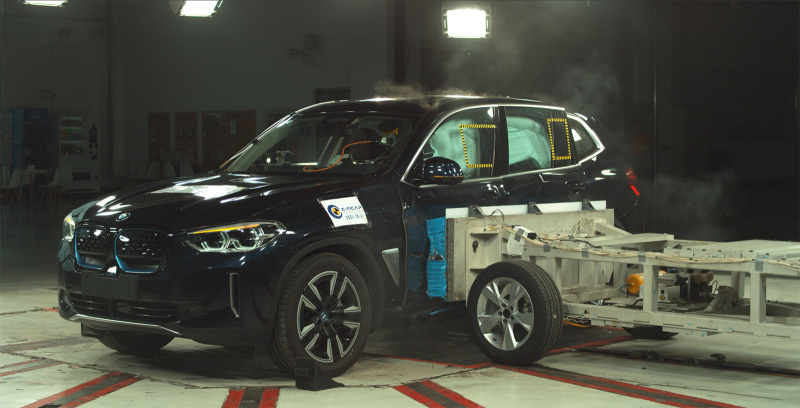
Structure, Materials, Airbags, What are the main evaluation criteria for automotive safety performance?
WilliamSep 14, 2024
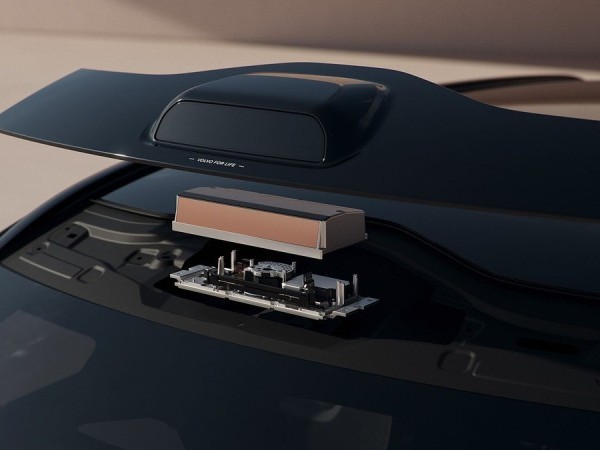
Warning: Vehicle LiDAR Can Damage Your Phone Camera!
AshleyMay 19, 2025

Well-Planned Space: The Exceptional Practicality of the Volvo XC60
Kevin WongMay 16, 2025
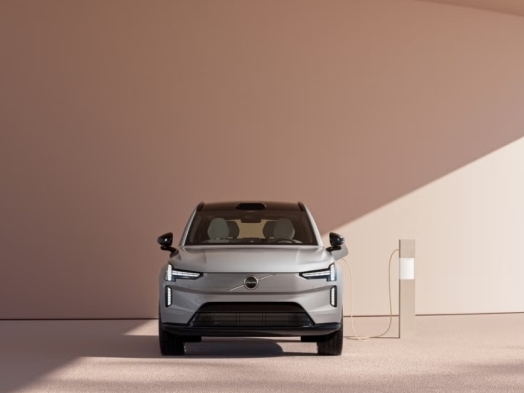
Volvo EX90 Electric SUV Now Available – RM 442,888
LienApr 11, 2025
View More









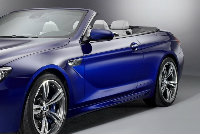


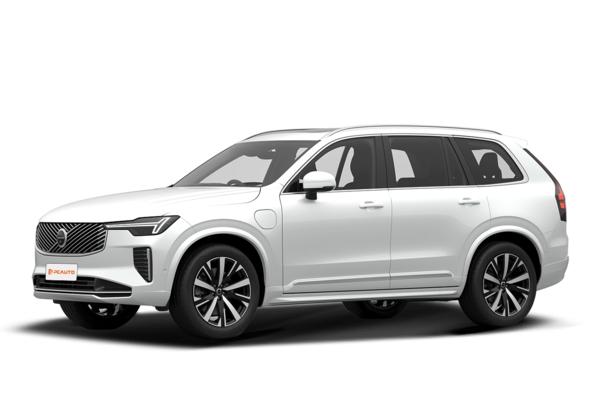




Pros
Cons